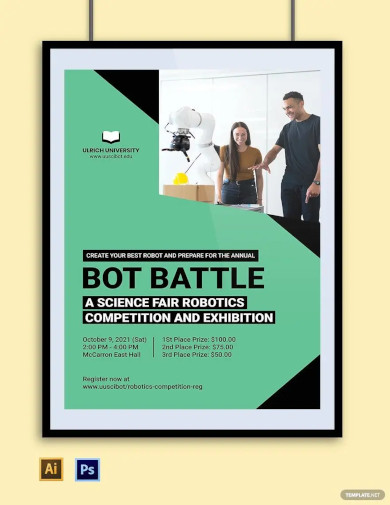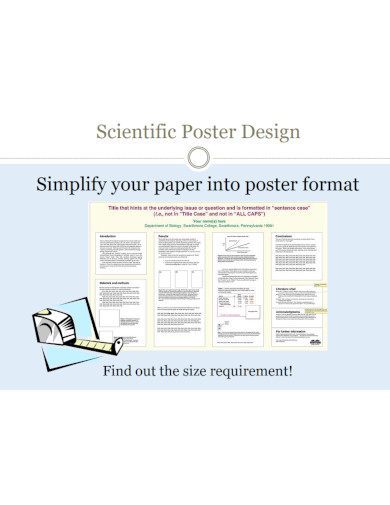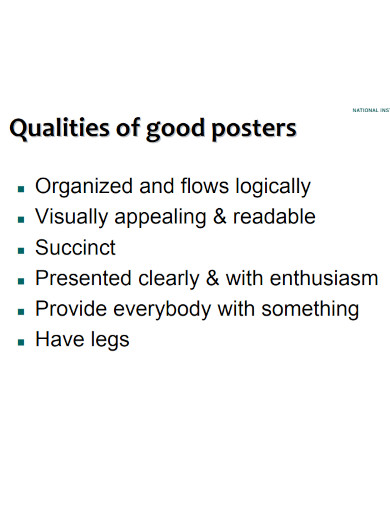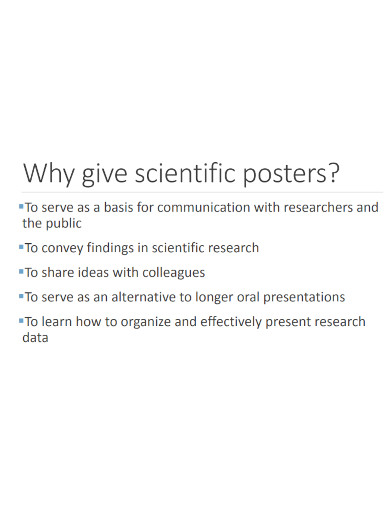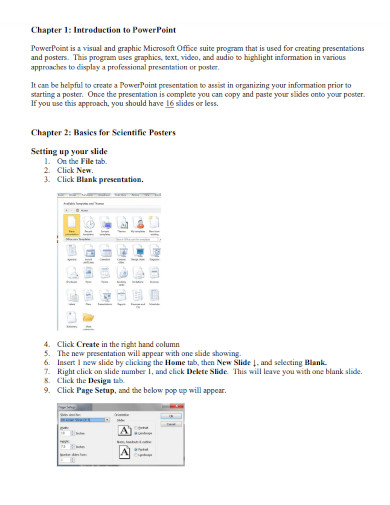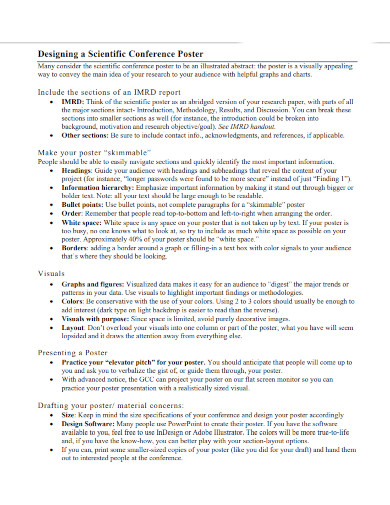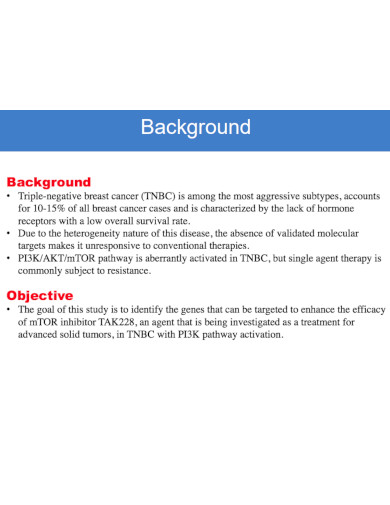21+ Scientific Poster Examples to Download
There are many ways for an individual to present key information to listeners in an active and engaging way. One of the best ways to relay scientific information and discoveries is through the active use of a scientific poster.
1. University Scientific Poster Template
2. A3 Scientific Poster Template
3. Scientific Poster Design Template
4. Presenting Dynamic Scientific Posters
5. Preparing Effective Scientific Poster
6. Scientific Poster Making Template
7. Scientific Poster Information Template
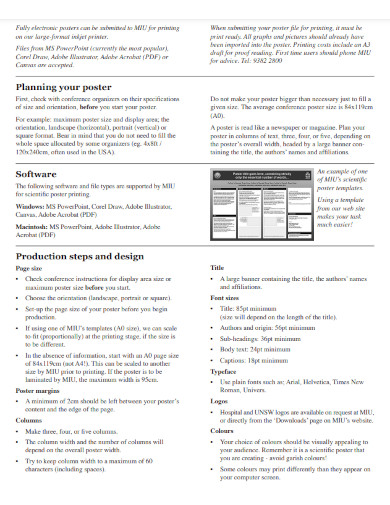
jlab.org
8. Preparing Scientific Poster

brandeis.edu
9. Scientific Poster Instructions
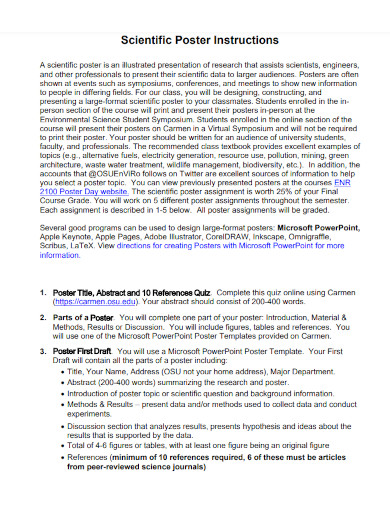
cpb-us-w2.wpmucdn.com
10. Conference Scientific Posters

postgraduate.uwa.edu.au
11. Designing Scientific Conference Poster
12. Scientific Posters Creating and Presenting
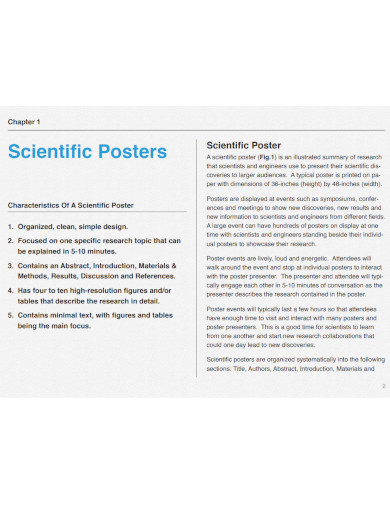
cpb-us-w2.wpmucdn.com
13. Designing Effective Scientific Poster
14. Effective Scientific Poster
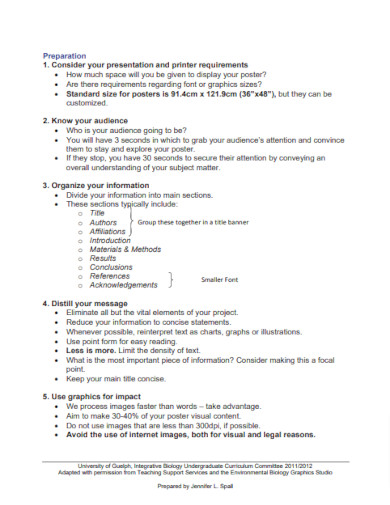
uoguelph.ca
15. Creating Poster Presentations
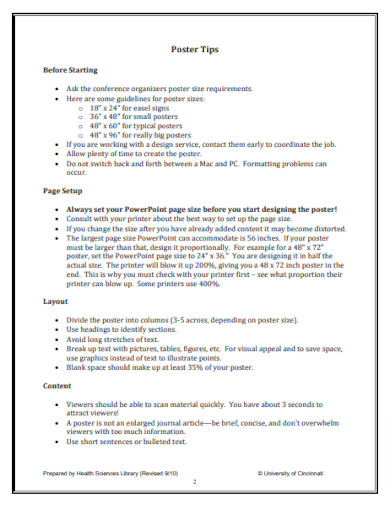
grad.uc.edu
16. Editable Scientific Poster
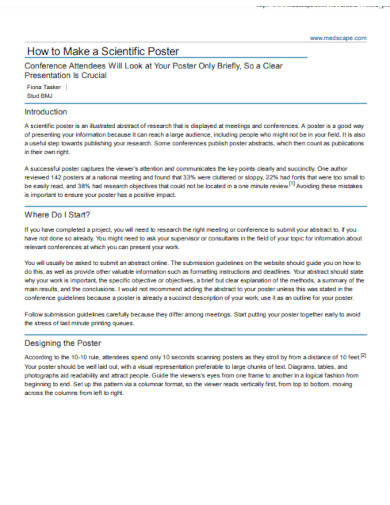
docareintl.org
17. Research Poster Design
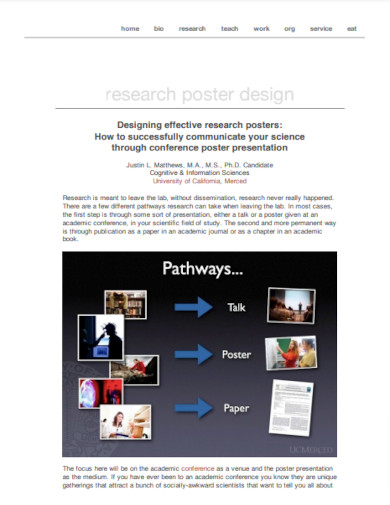
cogsci.ucmerced.edu
18. Scientific Poster Presentations
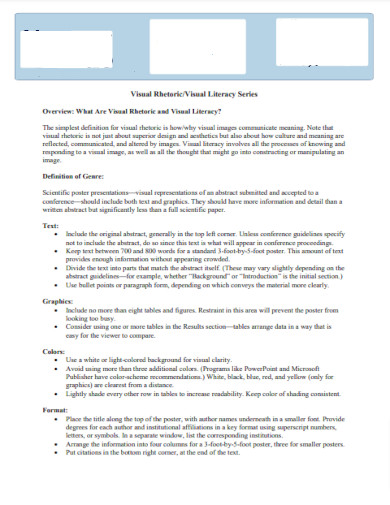
twp.duke.edu
19. Printable Effective Scientific Poster
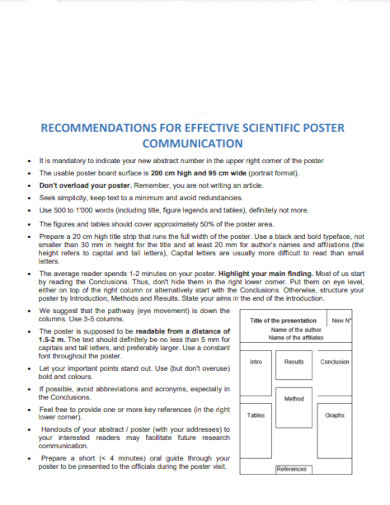
espen.org
20. Standard Scientific Posters

writing.caltech.edu
21. Successful Scientific Poster
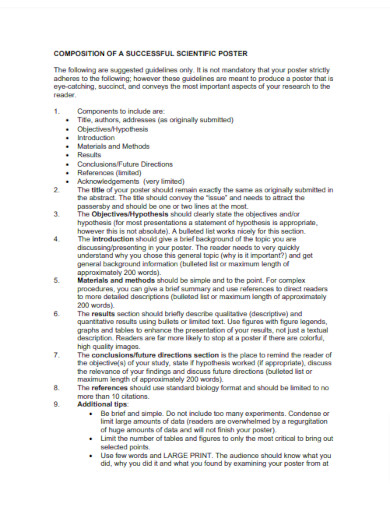
toxpath.org
22. Conference Scientific Poster
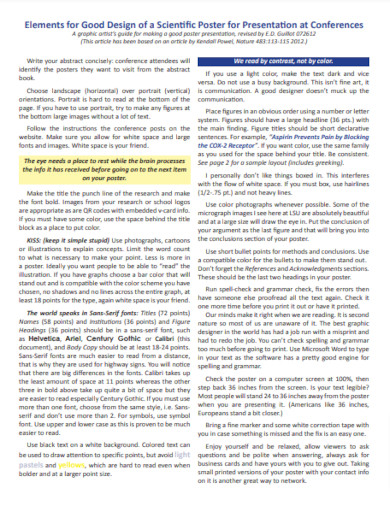
medschool.lsuhsc.edu
What Is A Scientific Poster
A poster is a picture that people can use to present information in a single document. A scientific poster is a specific type of poster that a scientist or a researcher will prepare to talk about a specific research topic or article. Often, a scientific poster is designed for a scientific conference or meeting.
How To Make an Award-Winning Scientific Poster
An award-winning scientific poster is both expertly crafted and dynamic as it will need to relay the information correctly and curtly at the same time. If you need a reference, you may utilize any of the scientific poster templates, Scientific Poster Making Template, Scientific Poster Information Template, and Scientific Poster Instructions.
Step 1: Make an Outline
Begin by making an outline of all the contents of the poster. This will help you prepare and plan out all the contents of the scientific poster and will help prepare you for its creation.
Step 2: Create a Snazzy Title or Headline
The first part of the scientific poster should be the title and headline of the overall poster. This headline should obtain the attention of the reader and tell said reader the direction and subject of the scientific poster.
Step 3: Divide the Poster
The poster should present all the information in one whole neat package. This means that the contents of the poster should be properly arranged and paced according to the outline.
Step 4: Create Succinct Descriptions
A poster should not have too much information but it should succinctly relay the message. This means that a poster should have around a paragraph for each subject in the poster. Adjust it accordingly depending on the outline made.
Step 5: Draw or Insert Images
The poster will also need to have images and drawings inserted into the contents alongside the appropriate descriptors. Be sure to not use too many images as it can reduce the quality of the scientific poster.
FAQs
What makes a good scientific poster?
Researchers and scientists are aware of the value of being able to express their work and ideas clearly utilizing a range of presentational techniques. Posters are frequently used in presentations at meetings and conferences and maybe a helpful medium for scientific communication. A strong scientific poster will not only grab the attention of the audience, but will also clearly and succinctly summarize the objectives, methods, and findings of your study.
What is the main purpose of a scientific poster?
You may have an immediate visual impression on your audience with a personalized poster. Additionally, posters provide your message a lot of exposure and enable you to connect with a wide range of individuals when put in busy places. Additionally, a poster should move its audience with its intended message.
What size should a scientific poster have?
It wholly depends on the purpose of your scientific poster and what is the end goal of the poster. If the poster will be shared on-screen either it has been physically posted there or is digitally projected, the size should be 36″ x 48″ or 42″ x 56″ in landscape orientation. This is done to fit the usual paper sizes available in the marketplace for printing. Not only that but it can fit most of the information, photos, art, and clip art without being too overwhelming or scattered.
A scientific poster is a subtype of a poster that will host either factual information about a specific subject or a researcher’s scientific article or thesis regardless of whether it is a qualitative or a quantitative research article. A well-made scientific poster can relay the necessary information and pictures without compromising the overall message and impression of the document or poster, whilst providing a good first impression of all the data presented.



